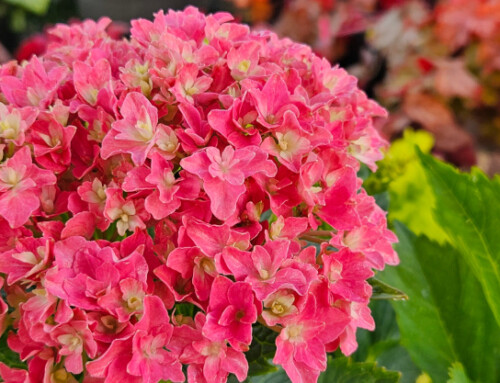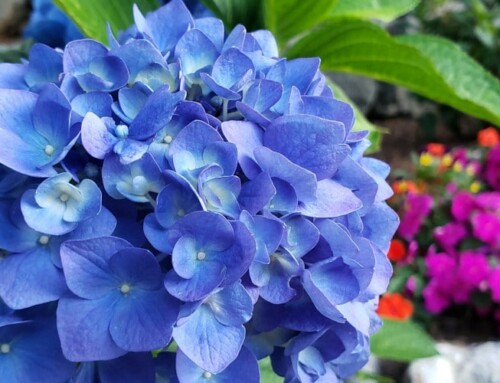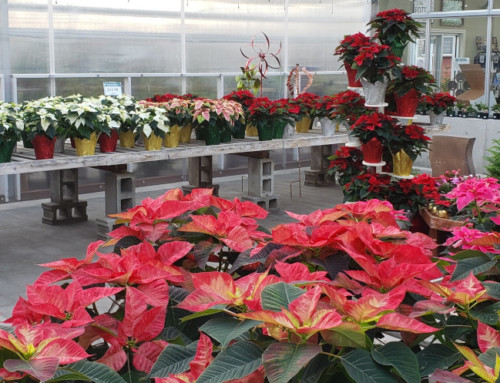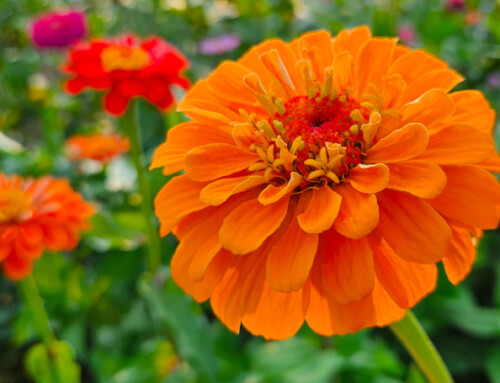Your flowers are planted, vacations are starting, and warmer days are becoming more and more frequent—in short, summer is on its way. As you sit back and watch things grow, you’ve probably also started to notice some problems showing up in your lawn and garden. Not to worry—for most garden problems, many people have faced the same battles and there are likely simple fixes. Here are a few of the most common problems and their solutions.
First off, a common lawn disease that begins to show up this time of year: red thread. Characterized by pinkish-brown patches throughout a lawn, red thread is a fungus that shows up most often in warm, humid conditions. With just enough warm, moist days lately, we’re getting perfect conditions for fungi to spread.
Red thread rarely does more than just aesthetic damage, but you can control it with a couple of simple steps. First, water your lawn in the morning rather than at night. It’s easiest to think about watering after work, but that leaves your grass wet (can you say “humid”?) all night, opening the door to disease problems.
Secondly, fertilize. Using a high-nitrogen fertilizer like Scotts Super Turf Builder will usually eradicate the symptoms of red thread, turning your lawn a vibrant green once again. If it’s been more than six weeks since you last fertilized, it’s time to do it anyway, regardless of what diseases your lawn might have.
Finally, if you’re really concerned about red thread in your lawn, be sure that you collect your grass with each mowing instead of mulching it back into your lawn. Mulching has the benefit of returning the nutrient of grass clippings back to the soil, but it can also spread fungal spores around your lawn with each mowing.
In your flowerbeds, a common problem that begins to show up this time of year is powdery mildew. True to name (most common plant disease names are very self-explanatory!), powdery mildew shows up as a white film on the leaves of many plants around the yard. Similarly, black spot (another no-brainer name) is starting to rear its ugly head, particularly on rose bushes. Like red thread, these diseases show up most commonly in moist and mild weather.
For both of these diseases, there are easy steps you can take to prevent your plants from becoming disfigured or dying. Spray shrubs and perennials with Bayer Insect, Disease & Mite Control to stop the disease from progressing. Then remove any badly-damaged leaves and fertilize your plants to encourage new growth. Be sure to clean up any fallen leaves from around the base of your plants to prevent the disease from spreading later on.
Lastly, you’ve probably noticed that many varieties of weeds are starting to spread in your lawn. For the best results, skip the “weed & feed” fertilizers—they typically aren’t very effective in weed control—and opt for an easy-to-use spray. Now, it may seem like a great idea to check “kill weeds” off your list right after mowing this weekend, but the best time to kill weeds is at least a few days aftermowing—it gives the weeds a chance to grow and gives you more leaf surface area to hit with the spray. A product like Bayer All-in-One Lawn Weed & Crabgrass Killer will kill most common lawn weeds for our area, or, for once-and-done treatment, choose Bayer Season Long, a weed killer that also prevents weeds from returning up to six months after spraying.
Summer is a great time for relaxation and fun, so don’t stress over reinventing the wheel as you deal with problems around your yard. Stop in at a local independent nursery for easy solutions to the issues you’re facing—chances are, someone there can help you out and get you back to your summer fun in no time.
[/fusion_builder_column][/fusion_builder_row][/fusion_builder_container]







Leave A Comment